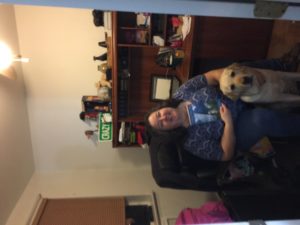Being a guide dog handler often means added responsibilities and animal husbandry when it comes to our canine partners. We not only practice daily obedience, but also brush their teeth, clean ears, and inspect nails for trimming. We check for changes in their relieving routines and the hands-on attention lets us know when to ask for assistance with identifying a bump or injury.
On the top of the list is eye health. Canine eye health is a primary concern for our dogs. I know, it seems almost trite to say it, but one cannot work a guide dog that has trouble seeing. Dogs are susceptible to eye diseases just like people. This is why the month of April and May has been reserved for free eye exams in a Nationally-recognized program instituted by the American College of Veterinary Ophthalmologists, or ACVO.
The ACVO/Epicur National Service Animal Eye Exam event will provide a free screening-wellness eye exam to qualified Service and Working Animals including those providing the following services: guide, hearing assistance, drug detection, police/military, search and rescue, therapy, and those assisting people with disabilities other than blindness. Registration is open annually April 1st – 30th.
Bailey passed his exam with great tolerance and a huge sneeze, which isn’t an uncommon reaction when getting one’s big Labrador eyes inspected with one of those newfangled blue light thingies. 😊
Below is Bailey sitting and looking at the camera wearing his new black ACVO bandana. What a good boy! 🦮
